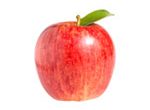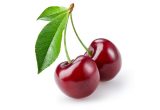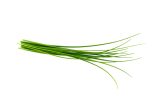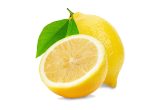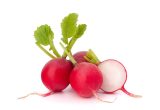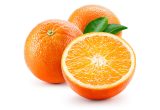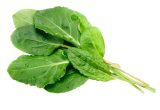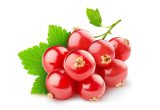Mango

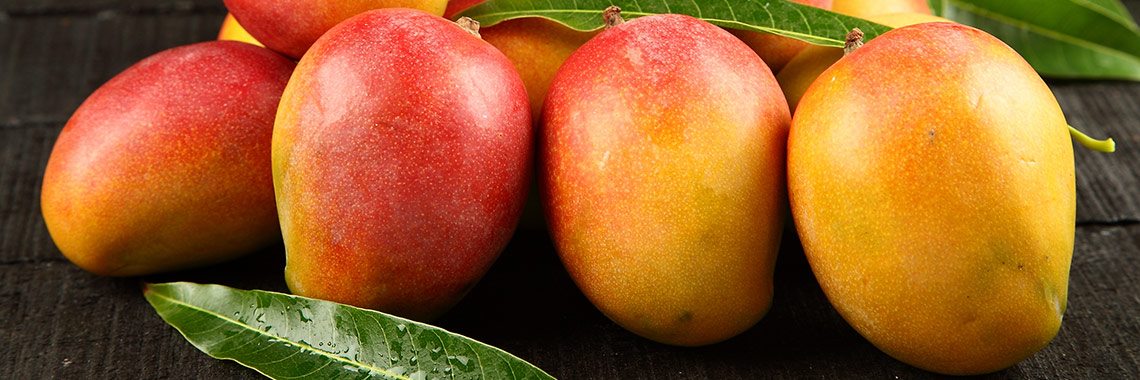
Description
- The mango tree (Mangifera indica L.) belongs to the Anacardiaceae family.
- India is the largest producer of mangoes in the world (Ramayya, 2012).
- It is a very popular tropical fruit across the world because of its colour, characteristic taste and nutritional value (Ramayya, 2012).
PHYSICAL AND ORGANOLEPTIC CHARACTERISTICS
- Mango is a climacteric fruit that ripens quickly after harvest (Ramayya, 2012).
- Mango skin is green when the fruit is not yet ripe and may turn red, yellow, or retain its green colour at full ripeness depending on the cultivars (Karanjalker, 2018).
- Carotenoids are the major components responsible for the bright yellow colour of mango pulp (Ramayya, 2012). The yellow-skinned ‘Arka Anmol’ cultivars are reported to have higher post-ripening carotenoid contents, mostly β-carotene and violaxanthin, while the red-skinned ‘Janardhan Pasand’ cultivars are reported to have higher anthocyanin contents, mainly cyanidin-3-O-monoglucosides and peonidin-3-O-glucosides (Karanjalker, 2018).
- An Indian team characterised the pigment profiles of mango skin during ripening. β-carotene, violaxanthin and cis-β-carotene were the major carotenoid pigments that significantly increased during ripening, while anthocyanin pigments of cyanidin, peonidin, petunidin, delphinidin and pelargonidin groups showed no difference. Moreover, chlorophyll degradation was observed during fruit ripening (Ranganath, 2018).
- Fruit firmness is also an indicator of fruit ripeness: the less firm the fruit, the closer it is to ripeness (Zakaria, 2012).
- The aroma of the ‘Alphonso’ mango cultivar is characterised by 26 volatile molecules (Chidley, 2013), including 2 belonging to the furanone family: furaneol and mesifuran (Kulkarni, 2013a). Compared to other fruits, mango is reported to have the highest concentration of these 2 components (Kulkarni, 2013a).
- Mango flavour is thought to be attributable to volatile compounds such as fruity esters, including 1-octanol, (E, Z)-2,6-nonadienal and γ-octalactone. On the other hand, the “green” turpentine-like flavor is reportedly correlated with high terpene levels (Sung, 2019) that increase during ripening (Chidley, 2013).
- Mango taste may vary depending on the geographical area and climate in which the fruit is grown (Kulkarni, 2013b).
COMPOSITION CHARACTERISTICS (excluding macronutrients, vitamins and minerals)
- An Italian team sought to characterise the polyphenol and carotenoid content of mango pulp. The polyphenols identified were mangiferin, gallic acid, gallotannins, quercetin, isoquercetin, ellagic acid and β-glucogallin. Gallic acid was the most represented phenolic compound in this fraction (Lauricella, 2017).
- Mango pulp is reported to contain other polyphenols such as phenolic acids including chlorogenic, vanillic, and ferulic acid (Vithana, 2018).
- Mango pulp is particularly rich in carotenoids. Up to 25 carotenoids have been identified such as provitamin A (or β-carotene), lutein and α-carotene (Lauricella, 2017; Ranganath, 2018).
- The carotenoids and phenolic compounds in mango are reported to have antioxidant and anti-inflammatory effects, conferring health benefits and limiting the development of cardiovascular diseases, type 2 diabetes, metabolic syndromes and cancer for example (Lauricella, 2017; Wall-Medrano, 2019).
- Antioxidant content (ascorbic acid and total phenols) and functional factors of mango vary among cultivars. Analysis of different Bangladeshi mango varieties (Fazli, Langra, Ashwina, Himsagor and Amrupali) showed that the ‘Langra’ variety had the highest phenol content and antioxidant properties compared to the other varieties, while the ‘Ashwina’ variety showed the highest ascorbic acid content (Lauricella, 2017).
RAW
The following values are approximate and depend on variety, season, ripeness, cultivation conditions, etc. The average mango provides 73.90 calories (kcal) per 100 g, i.e. 314 kJ. A mango weighs on average 400 g, which represents 295.60 kcal.
COMPOSITION TABLES
For each nutrient, the tables provide information on the content, minimum and maximum values, as well as the percentage of the Dietary Reference Values (DRVs) per 100 g net of mango.
MACRONUTRIENTS
| Constituent (g) | Average content |
Min-Max per 100g |
DRV% |
|---|---|---|---|
| Water | 81,1 | 80,80 - 88,10 | - |
| Fibers | 1,60 | 1,20 - 2,30 | - |
| Carbohydrates | 14,30 | 12,50 - 15,20 | 5,50 |
| Sugars | 12,90 | 7,88 - 13,70 | 14,33 |
| Lipids | < 0,50 | 0,10 - 0,60 | - |
| Saturated fat | < 0,01 | NC - 0,12 | - |
| Protein | 0,63 | 0,44 - 1,14 | 1,26 |
| Constituent (g) | Amount | Min-Max | DRV% |
|---|---|---|---|
| Water | Ciqual 2020 (valeur issue des analyses Ciqual-Aprifel 2017) | - | - |
| Fibers | Ciqual 2020 (valeur issue des analyses Ciqual-Aprifel 2017) | - | - |
| Carbohydrates | Ciqual 2020 | - | Règlement (UE) N°1169/2011 du parlement Européen et du conseil du 25 octobre 2011 |
| Sugars | Ciqual 2020 (valeur issue des analyses Ciqual-Aprifel 2017) | - | Règlement (UE) N°1169/2011 du parlement Européen et du conseil du 25 octobre 2011 |
| Lipids | Ciqual 2020 (valeur issue des analyses Ciqual-Aprifel 2017) | - | Règlement (UE) N°1169/2011 du parlement Européen et du conseil du 25 octobre 2011 |
| Saturated fat | Ciqual 2020 (valeur issue des analyses Ciqual-Aprifel 2017) | - | Règlement (UE) N°1169/2011 du parlement Européen et du conseil du 25 octobre 2011 |
| Protein | Ciqual 2020 (valeur issue des analyses Ciqual-Aprifel 2017) | - | Règlement (UE) N°1169/2011 du parlement Européen et du conseil du 25 octobre 2011 |
Zoom on carbohydrates
- The energy of mango comes mainly from its carbohydrates, at 14.30 g per 100 g.
- This content is above the average amount in fresh fruit: about 11.31 g per 100 g.
- Its carbohydrates are mainly sugar, in the form of sucrose (8.50 g per 100 g), fructose (3.40 g per 100 g) and glucose (1 g per 100 g), and starch (1.10 g per 100 g).
Zoom on fibres
- Mango contains an average of 1.60 g of fibre per 100 g, which is lower than the average content in fresh fruit (2.77 g per 100 g).
Zoom on proteins
- The protein content of mango (0.63 g per 100 g) is lower than the average amount found in fresh fruit: 0.93 g per 100 g.
Zoom on lipids
- The fat content of mango is less than 0.5 g per 100 g; mango is therefore fat-free*.
*Regulation (EC) No 1924/2006 of the European Parliament and of the Council of 20 December 2006 on nutrition and health claims made on foods
MINERALS AND TRACE ELEMENTS
| Constituent | Average content |
Min-Max per 100g |
DRV% |
|---|---|---|---|
| Calcium (mg) | 12 | 7 - 25,80 | 1,50 |
| Chloride (mg) | 21,80 | - | 2,73 |
| Copper (mg) | 0,07 | 0,045 - 0,32 | 7 |
| Iron (mg) | 0,09 | NC - 0,41 | 0,64 |
| Iodine (µg) | < 20 | 0,04 - NC | - |
| Magnesium (mg) | 11 | 6,20 - 19 | 2,93 |
| Manganese (mg) | 0,07 | 0,027 - 0,12 | 3,50 |
| Phosphorus (mg) | 12 | 10 - 20,90 | 1,71 |
| Potassium (mg) | 150 | 12 - 211 | 7,50 |
| Selenium (µg) | < 20 | 0 - NC | - |
| Sodium (mg) | < 5 | 0 - 12 | - |
| Zinc (mg) | 0,11 | 0,06 - 0,15 | 1,10 |
| Constituent | Amount | Min-Max | DRV% |
|---|---|---|---|
| Calcium (mg) | Ciqual 2020 (valeur issue des analyses Ciqual-Aprifel 2017) | - | Règlement (UE) N°1169/2011 du parlement Européen et du conseil du 25 octobre 2011 |
| Chloride (mg) | Ciqual 2020 (valeur issue des analyses Ciqual-Aprifel 2017) | - | Règlement (UE) N°1169/2011 du parlement Européen et du conseil du 25 octobre 2011 |
| Copper (mg) | Ciqual 2020 (valeur issue des analyses Ciqual-Aprifel 2017) | - | Règlement (UE) N°1169/2011 du parlement Européen et du conseil du 25 octobre 2011 |
| Iron (mg) | Ciqual 2020 (valeur issue des analyses Ciqual-Aprifel 2017) | - | Règlement (UE) N°1169/2011 du parlement Européen et du conseil du 25 octobre 2011 |
| Iodine (µg) | Ciqual 2020 | - | Règlement (UE) N°1169/2011 du parlement Européen et du conseil du 25 octobre 2011 |
| Magnesium (mg) | Ciqual 2020 (valeur issue des analyses Ciqual-Aprifel 2017) | - | Règlement (UE) N°1169/2011 du parlement Européen et du conseil du 25 octobre 2011 |
| Manganese (mg) | Ciqual 2020 (valeur issue des analyses Ciqual-Aprifel 2017) | - | Règlement (UE) N°1169/2011 du parlement Européen et du conseil du 25 octobre 2011 |
| Phosphorus (mg) | Ciqual 2020 (valeur issue des analyses Ciqual-Aprifel 2017) | - | Règlement (UE) N°1169/2011 du parlement Européen et du conseil du 25 octobre 2011 |
| Potassium (mg) | Ciqual 2020 (valeur issue des analyses Ciqual-Aprifel 2017) | - | Règlement (UE) N°1169/2011 du parlement Européen et du conseil du 25 octobre 2011 |
| Selenium (µg) | Ciqual 2020 (valeur issue des analyses Ciqual-Aprifel 2017) | - | Règlement (UE) N°1169/2011 du parlement Européen et du conseil du 25 octobre 2011 |
| Sodium (mg) | Ciqual 2020 (valeur issue des analyses Ciqual-Aprifel 2017) | - | - |
| Zinc (mg) | Ciqual 2020 (valeur issue des analyses Ciqual-Aprifel 2017) | - | Règlement (UE) N°1169/2011 du parlement Européen et du conseil du 25 octobre 2011 |
Zoom on minerals and trace elements
- Potassium is the best-represented mineral in mango with a content representing 7.50% of DRVs, i.e. 150 mg per 100 g.
- The other minerals and trace elements are present in quantities representing less than 8% of DRVs.
VITAMINS
| Constituent | Average content |
Min-Max per 100g |
DRV% |
|---|---|---|---|
| Provitamin A Beta-carotene (µg) | 864 | 185 - 1680 | - |
| Vitamin A equivalent (µg) | 144 | 30,83 - 280 | 18 |
| Vitamin B1 (mg) | < 0,015 | 0,014 - 0,058 | - |
| Vitamin B2 (mg) | < 0,01 | NC - 0,072 | - |
| Vitamin B3 (mg) | 0,72 | 0,20 - 1,31 | 4,50 |
| Vitamin B5 (mg) | 0,18 | 0,16 - 0,24 | 3 |
| Vitamin B6 (mg) | 0,10 | 0,053 - 0,16 | 7,14 |
| Vitamin B9 (µg) | 70,20 | 9,40 - 129 | 35,10 |
| Vitamin C (mg) | 25 | 13,20 - 92,80 | 31,25 |
| Vitamin E (mg) | 2,05 | 0,79 - NC | 17,08 |
| Vitamin K1 (µg) | 1,12 | NC - 4,20 | 1,49 |
| Constituent | Amount | Min-Max | DRV% |
|---|---|---|---|
| Provitamin A Beta-carotene (µg) | Ciqual 2020 (valeur issue des analyses Ciqual-Aprifel 2017) | - | - |
| Vitamin A equivalent (µg) | Calcul à partir de la valeur Provitamine A Béta-carotène* | - | Règlement (UE) N°1169/2011 du parlement Européen et du conseil du 25 octobre 2011 |
| Vitamin B1 (mg) | Ciqual 2020 (valeur issue des analyses Ciqual-Aprifel 2017) | - | Règlement (UE) N°1169/2011 du parlement Européen et du conseil du 25 octobre 2011 |
| Vitamin B2 (mg) | Ciqual 2020 (valeur issue des analyses Ciqual-Aprifel 2017) | - | Règlement (UE) N°1169/2011 du parlement Européen et du conseil du 25 octobre 2011 |
| Vitamin B3 (mg) | Ciqual 2020 (valeur issue des analyses Ciqual-Aprifel 2017) | - | Règlement (UE) N°1169/2011 du parlement Européen et du conseil du 25 octobre 2011 |
| Vitamin B5 (mg) | Ciqual 2020 (valeur issue des analyses Ciqual-Aprifel 2017) | - | Règlement (UE) N°1169/2011 du parlement Europée, et du conseil du 25 octobre 2011 |
| Vitamin B6 (mg) | Ciqual 2020 (valeur issue des analyses Ciqual-Aprifel 2017) | - | Règlement (UE) N°1169/2011 du parlement Européen et du conseil du 25 octobre 2011 |
| Vitamin B9 (µg) | Ciqual 2020 (valeur issue des analyses Ciqual-Aprifel 2017) | - | Règlement (UE) N°1169/2011 du parlement Européen et du conseil du 25 octobre 2011 |
| Vitamin C (mg) | Ciqual 2020 (valeur issue des analyses Ciqual-Aprifel 2017) | - | Règlement (UE) N°1169/2011 du parlement Européen et du conseil du 25 octobre 2011 |
| Vitamin E (mg) | Ciqual 2020 (valeur issue des analyses Ciqual-Aprifel 2017) | - | Règlement (UE) N°1169/2011 du parlement Européen et du conseil du 25 octobre 2011 |
| Vitamin K1 (µg) | Ciqual 2020 (valeur issue des analyses Ciqual-Aprifel 2017) | - | Règlement (UE) N°1169/2011 du parlement Européen et du conseil du 25 octobre 2011 |
Zoom on vitamins
- Mango is high in:
- vitamin B9, as it provides the equivalent of 35.10% of DRVs, i.e. 70.20 µg per 100 g;
- vitamin C, as it provides the equivalent of 31.25% of DRVs, i.e. 25 mg per 100 g.
- Mango is a source of:
- vitamin A, carotenoid family, as it provides the equivalent of 18% of DRVs, i.e. 144 µg per 100 g. Mango is one of the fruits that contains the most β-carotene (in 5th place) according to the Ciqual 2020 table.
- vitamin E, as it provides the equivalent of 17.08% of DRVs, i.e. 2.05 mg per 100 g. After blackcurrant, mango is the fruit that contains the most vitamin E (Ciqual 2020 table).
- The other vitamins are present in quantities representing less than 8% of DRVs.
*Calculation made: Beta-Carotene / 6 + retinol
POLYPHENOLS
| Constituent (mg) | Average content |
Min-Max per 100mg |
|---|---|---|
| Flavonoids (mg) | 1,72 | - |
| of which Flavanols (mg) | 1,72 | - |
| Total polyphenols | 1,72 | - |
| Constituent (mg) | Amount | Min-Max |
|---|---|---|
| Flavonoids | Phenol explorer 3.6 -Méthode utilisée : Chromatographie | - |
| of which Flavanols | Phenol explorer 3.6 -Méthode utilisée : Chromatographie | - |
| Total polyphenols | Phenol explorer 3.6 -Méthode utilisée : Chromatographie | - |
Zoom on polyphenols
- Polyphenols are substances with an antioxidant effect.
- Mango contains few polyphenols according to the chromatography method. These polyphenols are in the form of flavanols, from the flavonoid family
Nutrition and health claims
According to the definitions of nutrition claims as set out in Regulation (EC) No 1924/2006 on nutrition and health claims, and in view of the composition of mango, the following claims may be used:
NUTRITION BENEFITS OF MANGO
- High in vitamin B9 (100 g of mango provide the equivalent of more than 30% of DRVs)
- High in vitamin C (100 g of mango provide the equivalent of more than 30% of DRVs)
- Source of vitamin A (100 g of mango provide the equivalent of more than 15% of DRVs)
- Source of vitamin E (100 g of mango provide the equivalent of more than 15% of DRVs)
- Fat-free (100 g of mango contain less than 0.5 g of fat)
HEALTH CLAIMS (for a consumption of 100 g of mango)
Folates or vitamin B9
- Folates contribute to:
- maternal tissue growth during pregnancy,
- normal amino acid synthesis,
- normal blood formation,
- normal homocysteine metabolism,
- normal psychological function,
- normal function of the immune system,
- reduction of tiredness and fatigue.
- Folates have a role in the process of cell division.
Vitamin C
- Vitamin C contributes to:
- normal function of the immune system during and after intense physical exercise,
- normal collagen formation for the normal function of blood vessels,
- normal collagen formation for the normal function of bones,
- normal collagen formation for the normal function of cartilage,
- normal collagen formation for the normal function of gums,
- normal collagen formation for the normal function of skin,
- normal collagen formation for the normal function of teeth,
- normal energy-yielding metabolism,
- normal functioning of the nervous system,
- normal psychological function,
- normal function of the immune system,
- protection of cells from oxidative stress,
- reduction of tiredness and fatigue,
- regeneration of the reduced form of vitamin E.
- Vitamin C increases iron absorption.
Vitamin A
- Vitamin A has a role in the process of cell specialisation.
- Vitamin A contributes to:
- maintenance of normal skin,
- maintenance of normal mucous membranes,
- maintenance of normal vision,
- normal iron metabolism,
- normal function of the immune system.
Vitamin E
- Vitamin E contributes to the protection of cells from oxidative stress.
References
- Agence nationale de sécurité sanitaire de l’alimentation, de l’environnement et du travail. Table de composition nutritionnelle des aliments Ciqual 2020. Consultée le 11/08/2020 depuis le site internet Ciqual https://ciqual.anses.fr/
- Chidley HG, Kulkarni RS, Pujari KH, Giri AP, Gupta VS. Spatial and temporal changes in the volatile profile of Alphonso mango upon exogenous ethylene treatment. Food Chem. 2013;136(2):585-94.
- Karanjalker GR, Ravishankar KV, Shivashankara KS, Dinesh MR, Roy TK, Sudhakar Rao DV. A Study on the Expression of Genes Involved in Carotenoids and Anthocyanins During Ripening in Fruit Peel of Green, Yellow, and Red Colored Mango Cultivars. Applied Biochemistry and Biotechnology 2018;184(1): 140–54.
- Kulkarni R, Chidley H, Deshpande A, Schmidt A, Pujari K, Giri A, Gershenzon J, Gupta V. An oxidoreductase from ‘Alphonso’ mango catalyzing biosynthesis of furaneol and reduction of reactive carbonyls. Springerplus. 2013a;2:494.
- Kulkarni R, Pandit S, Chidley H, Nagel R, Schmidt A, Gershenzon J, Pujari K, Giri A, Gupta V. Characterization of three novel isoprenyl diphosphate synthases from the terpenoid rich mango fruit. Plant Physiol Biochem. 2013b;71:121-31.
- Lauricella M, Emanuele S, Calvaruso G, Giuliano M, D’Anneo A. Multifaceted Health Benefits of Mangifera indica L. (Mango): The Inestimable Value of Orchards Recently Planted in Sicilian Rural Areas. Nutrients. 2017;9(5): 525.
- Neveu V, Perez-Jiménez J, Vos F, Crespy V, du Chaffaut L, Mennen L, Knox C, Eisner R, Cruz J, Wishart D, Scalbert A. (2010) Phenol-Explorer: an online comprehensive database on polyphenol contents in foods. Database, doi: 10.1093/database/bap024. Full text (free access)
- Ramayya N, Niranjan K, Duncan E. Effects of modified atmosphere packaging on quality of ‘Alphonso’ Mangoes. J Food Sci Technol. 2012;49(6):721-8.
- Ranganath, K.G., Shivashankara, K.S., Roy, T.K. et coll. Profilage des anthocyanines et des caroténoïdes dans la peau de fruits de différents cultivars de mangue colorés. J Food Sci Technol 55, 4566-4577 (2018). https://doi.org/10.1007/s13197-018-3392-7
- Règlement (CE) N° 1924/2006 du Parlement européen et du Conseil du 20 décembre 2006 concernant les allégations nutritionnelles et de santé portant sur les denrées alimentaires.
- Règlement (UE) N°432/2012 de la Commission du 16 mai 2012 établissant une liste des allégations de santé autorisées portant sur les denrées alimentaires, autres que celles faisant référence à la réduction du risque de maladie ainsi qu’au développement et à la santé infantiles.
- Règlement (UE) n°1169/2011 du Parlement européen et du Conseil du 25 octobre 2011 concernant l’information des consommateurs sur les denrées alimentaires, modifiant les règlements (CE) n°1924/2006 et (CE) n°1925/2006 du Parlement européen et de Conseil et abrogeant la directive 87/250/CEE de la Commission, la directive 90/496/CEE du Conseil, la directive 1999/10/CE de la Commission, la directive 200/13/CE du Parlement européen et du Conseil, les directives 2002/67/CE et 2008/5/CE de la Commission et le règlement (CE) n°608/2004 de la Commission.
- Sung J, Suh JH, Chambers AH, Crane J, Wang Y. Relationship between Sensory Attributes and Chemical Composition of Different Mango Cultivars. Journal of Agricultural and Food Chemistry. 2019;67(18): 5177–88.
- Vithana MD, Singh Z, Johnson SK. Dynamics in the concentrations of health-promoting compounds: lupeol, mangiferin and different phenolic acids during postharvest ripening of mango fruit. Journal of the Science of Food and Agriculture. 2018;98(4): 1460–8.
- Wall‐Medrano A, Olivas‐Aguirre FJ, Ayala‐Zavala JF, Domínguez‐Avila JA, Gonzalez‐Aguilar GA, Herrera‐Cazares LA, et al (2019). chapter 6 : Health Benefits of Mango By-products. In : Food Wastes and By-products. John Wiley & Sons : Rocio Campos‐Vega B. Dave Oomah Haydé Azeneth Vergara‐Castañeda, 459 p.
- Zakaria A, Shakaff AY, Masnan MJ, Saad FS, Adom AH, Ahmad MN, Jaafar MN, Abdullah AH, Kamarudin LM. Improved maturity and ripeness classifications of Magnifera Indica cv. Harumanis mangoes through sensor fusion of an electronic nose and acoustic sensor. Sensors (Basel). 2012;12(5):6023-48.




